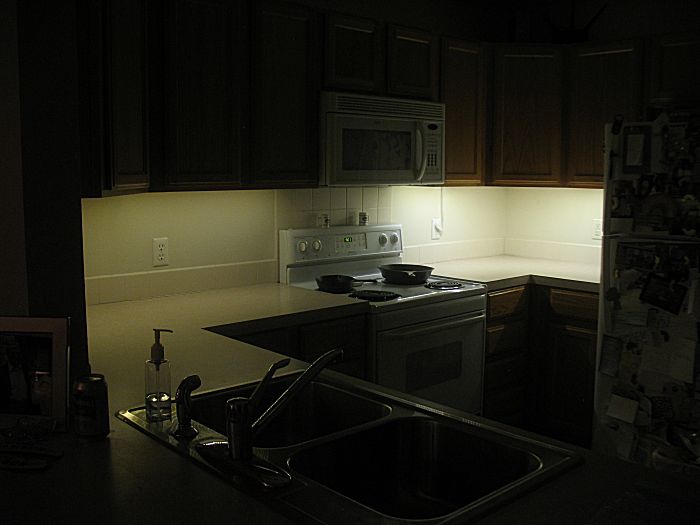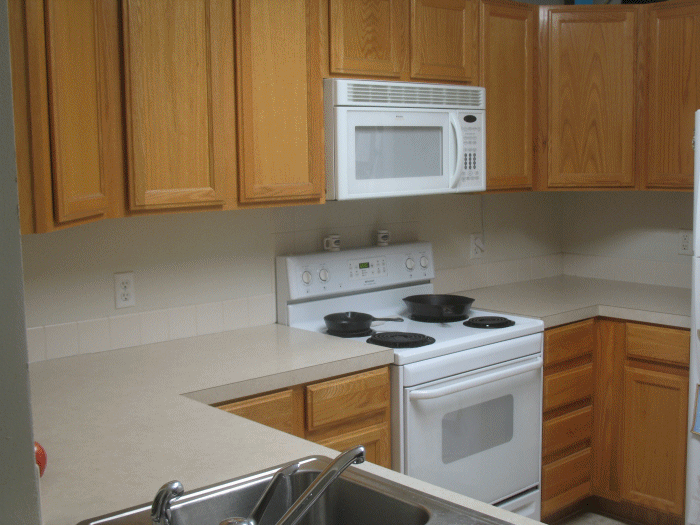Undercabinet LED illumination
|
Undercabinet LED lighting has been rattling around my mind for a bit.
Something a bit more uniform & dispersed than the stove lights
might be nice. Toying with some LED strips recently had me thinking of
this project. I wasn't certain as to what color or intensity might be
best I opted for two different types in hopes that one would be good. Two, 2 meter long strips were chosen - (left of stove) $16 USB LED 5V SMD 5050 Warm White (right of stove) $8 USB LED 5V SMD 3528 Soft Warm White $2 USB power adapter from a surplus store (Casio CNRUSB 120vAC to 5vDC 1amp $13 External switch "extension cord" The 3528 / right of stove is the design I'd prefer - and might swap out at the left side. The illumination is perhaps a bit nicer though also the wiring was a tad easier - simple +/- connection where the left of stove had four connections +++/-. Not a big deal, but more time consuming when soldering connections. I could see buying pre-made connections if they aren't costly. |
| One of the strips. They come with a USB cable
for power already connected. Plug it into a cell phone charger / power
adapter - done. They are self adhesive. Time will tell if the adhesive
stays put. Undercabinet surface cleaned prior. |
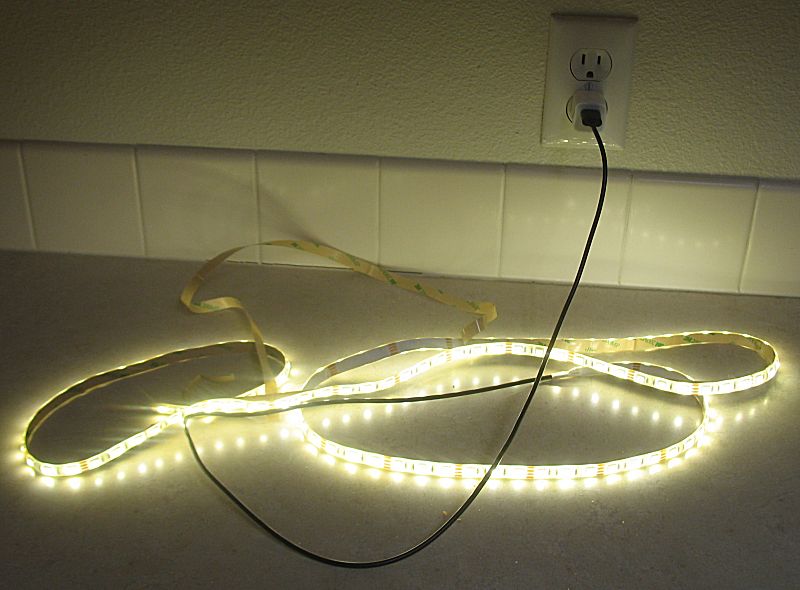
| Add in an external switch "extension cord" for
control - the pieces are coming together. |
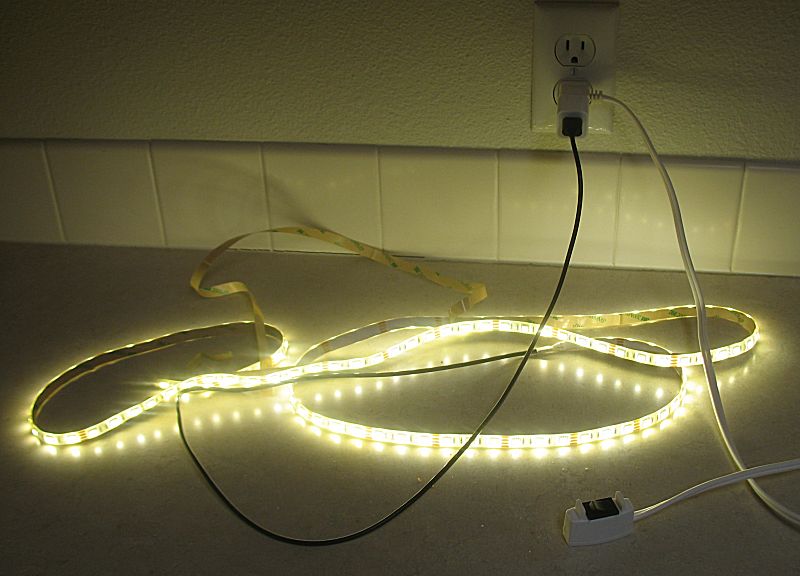
| Stick the 1/4" wide gridning stone for use in
cutting a groove in the cabinet sides. Possibly not the choice should I
do this again - too much smoke (read - smoke alarms loved me). Perhaps
next time a circular saw, depth set as appropriate and making three or
four quick passes to make the groove. |
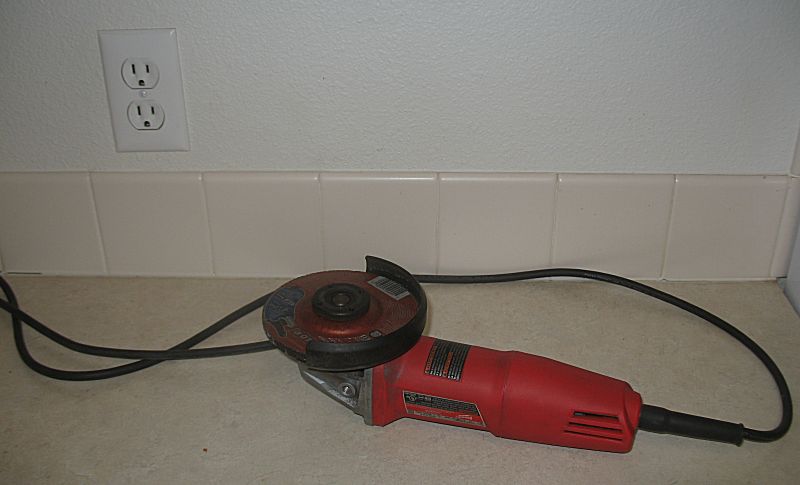
| Two strips connected to wiring. One strip
"stuck" to the cabinet. |
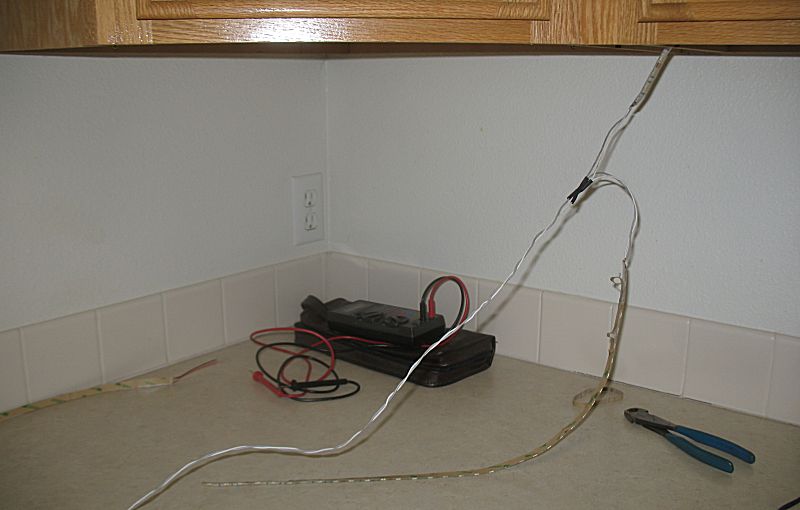
| Progress! |
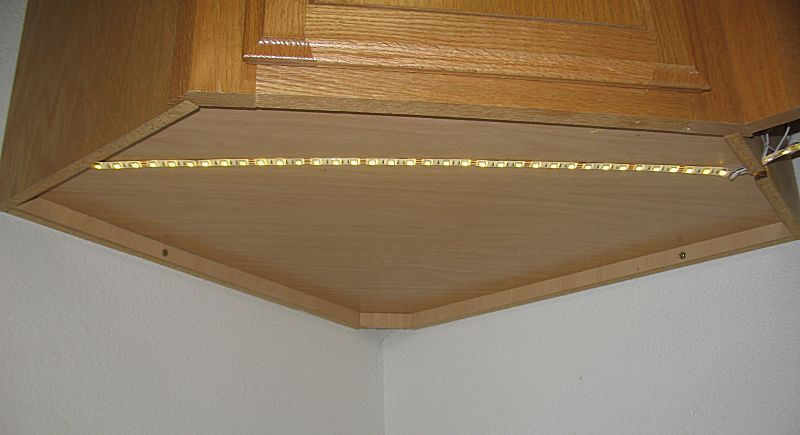
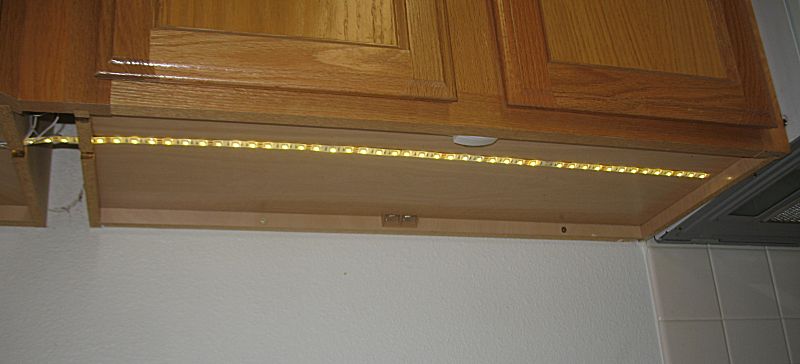
| Using the gaps between the cabinets for a
clean wiring channel. |
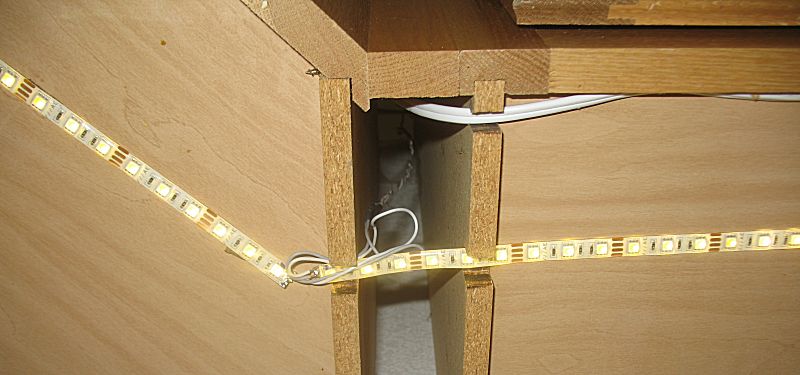
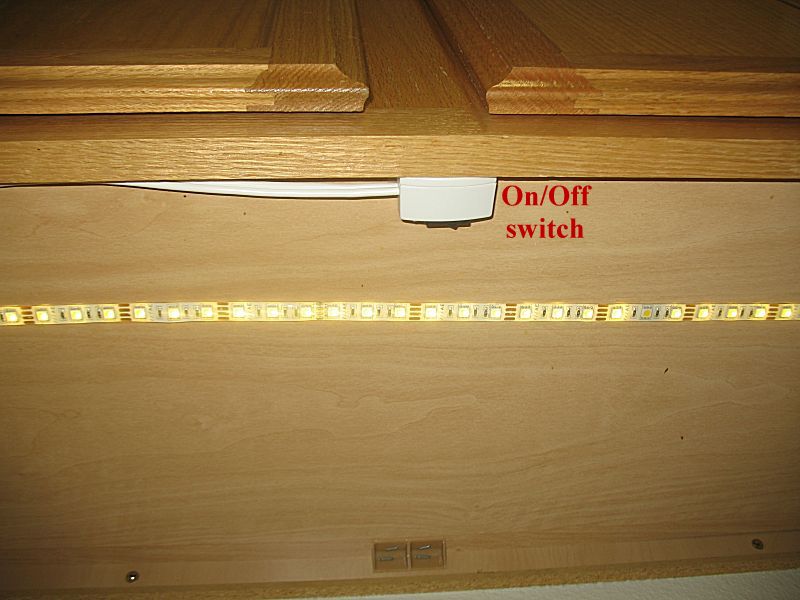
| Right side |
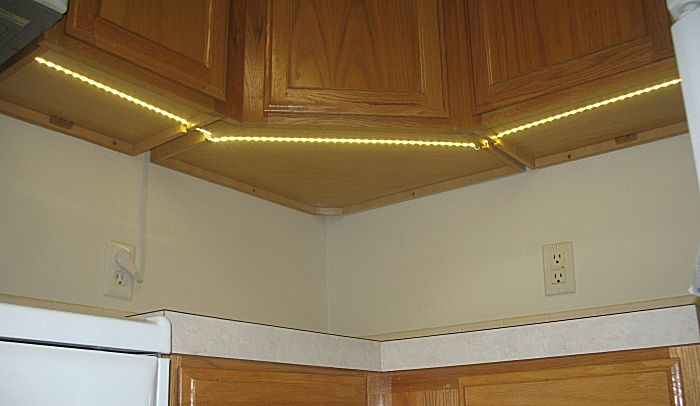
| Left side |
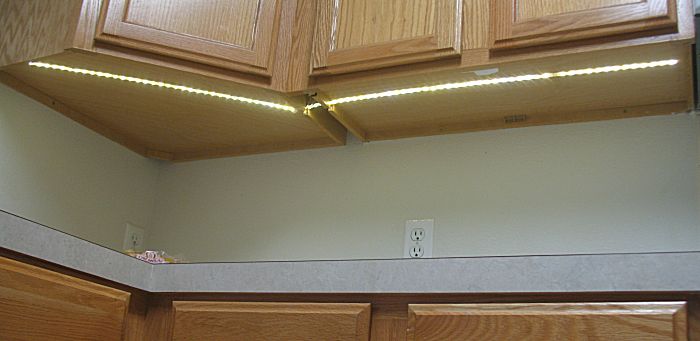
| Up top |
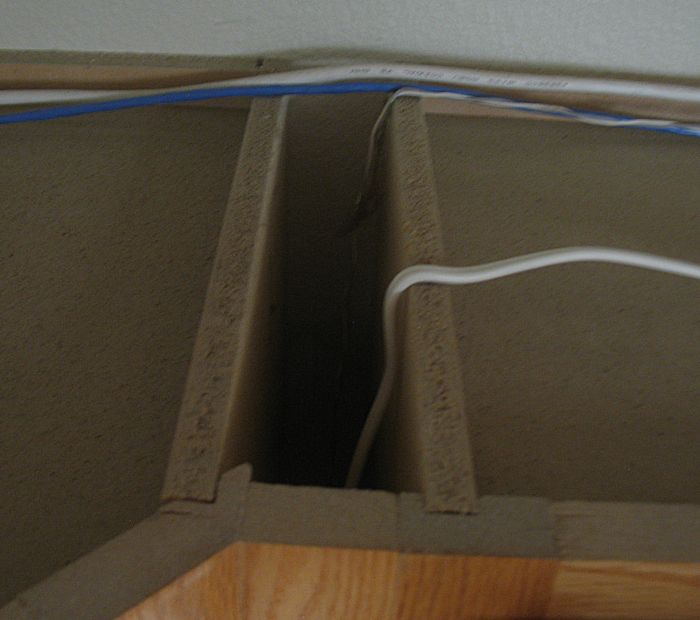
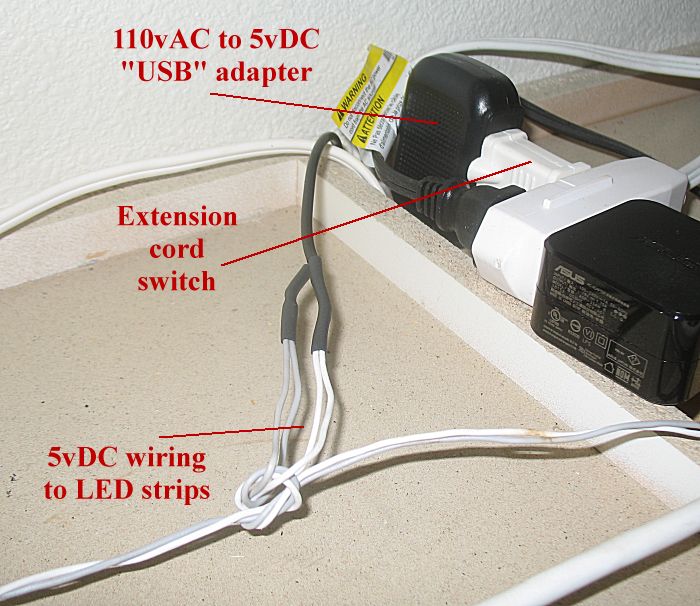
| Original - high intensity Two incandescent appliance bulbs - they're perhaps 15 or 40 watts, each. |
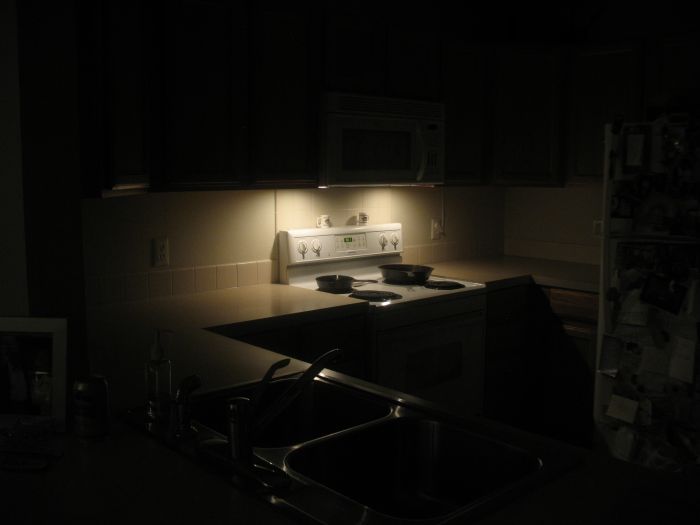
| New - LED's only The right side looks significantly brighter in the photo but in reality it does not seem to have as large of a difference. Kill-A-Watt P3 stats: 121vAC; 0.06 amp; 4 watt |
